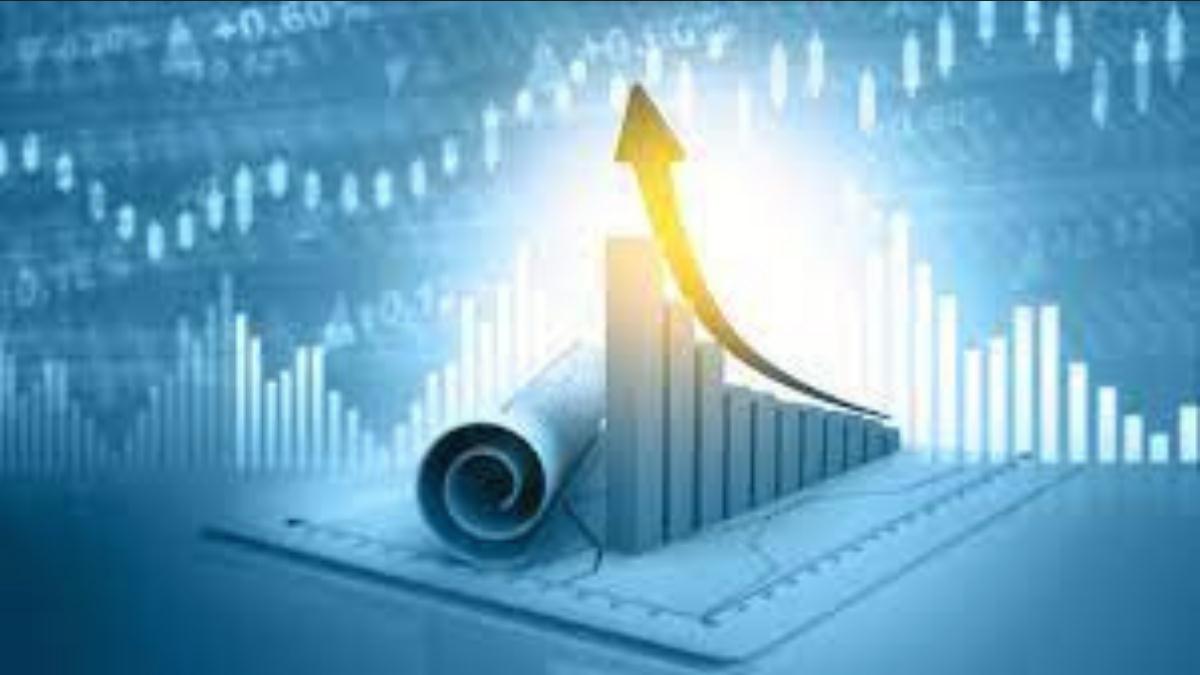The economic system is all the procedures used to coordinate the behavior of society including producers, consumers, government, banks and others in carrying out economic activities in terms of production, distribution, consumption and investment which are integrated to form one integrated whole, orderly and dynamic so that it can avoid chaos in the economic field.
McEachern himself defines an economic system as a set of mechanisms and institutions to answer questions about what, how, and for whom goods and services are produced. The economic system can also be understood as a device used by a country to manage economic factors and allocate the resources it has through economic units and institutions in order to avoid chaos in the economic field.
In a country, the existence of an economic system is very important because it functions as a driving force for the production system. Apart from that, the economic system also functions to create a mechanism so that the process of distributing goods and services runs well. In other words, without a good economic system, economic growth can also be maintained well.
The implementation of an economic system in a country is influenced by internal and external factors. Internal factors can include human resources, natural resources, geographical location and physical conditions. Meanwhile, external factors can include global security, world politics, world economic conditions and technological developments. Next, we will get to know several types of systems that exist in the world. Here are some of them:
1. Traditional Economic System
The traditional economic system is the most conventional system with two main elements in it, namely respect for tradition and the minimum amount of waste produced. The traditional economic system itself is identically applied in rural communities with economic results in the form of agriculture.
The transaction method used was by exchanging goods because natural products and human labor were the main capital in society at that time. In a traditional economic system, the government is not directly involved in economic activities, it only plays a role as a guardian of order. The main aim of this economic system itself is only to meet the daily needs of the people, not to make a profit.
Economic activities are still related to tradition and culture. The production method used is still very simple and does not have a work structure, it also does not use centralized facilities, technology and things that are symbols of progress.
Each member of the traditional economy has a special role so that each member has a close relationship. If conventional business people use this economic system, they must try to keep their business from stagnating or stagnating.
2. Command Economic System
The command economic system has a centralized and dominated system. Most of the system will be controlled by the government which is involved in the production process from equipment to facilities. The domination factor itself is clearly visible in valuable resources, because something that is able to generate the greatest profits will be controlled by the government and other resources will be managed by the people.
However, if the government is able to make the right policies, many benefits will be gained, such as creating equitable development from the use of state-owned resources. Countries that implement this economic system include North Korea, the People’s Republic of China, Vietnam and Cuba.
3. Mixed Economic System
A mixed economic system or also known as a dual economy because it combines market and command economic systems. As a result, the government and the market then work together in managing existing resources. The government recognizes individual property rights provided that they do not harm the public interest.
The government plays a role in providing limits and can intervene. The government makes plans, regulations and policies related to the economy. Competition then occurs in the market within reasonable and clean limits where the government also carries out supervision. Market mechanisms will determine the type and quantity of goods produced.
The government controls all vital resources that affect the lives of many people. The government and private sector have the same role in economic activities. However, this system is also prone to problems, especially when government power increases.
This is triggered by excessive control or difficulty of access and a less flexible economy. Apart from that, the government is also involved in market mechanisms through various economic policies and monetary policies. The shortcomings of this economic system include the government having greater responsibility than the private sector, apart from that, even though the government plays an active role in the economy.
However, economic problems still occur, for example inflation, unemployment, and so on. Equal distribution of income is also very difficult to achieve in this economic system. Economic growth tends to be slower than in a liberal economic system.
The private sector cannot maximize its profits because there is intervention from the government and restrictions on production sources controlled by the government and the private sector are difficult to determine. Countries that adhere to this economic system include: Indonesia, India, the Philippines, Malaysia, Morocco, France, Egypt and Australia.
4. Socialist Economic System
A socialist economic system is a system in which society has equal ownership of production factors (workers, entrepreneurs, capital and natural resources which are owned by society but whose management is fully regulated by the state).
The government also plays a full role in regulating distribution and production results. In Indonesia itself there is a form of Pancasila economy which is based on the Pancasila ideology with the meaning of democratic economics and adheres to the principles of kinship and mutual cooperation with the concept of, by and for the people. In the Pancasila system, cooperatives are also used as one of the spearheads by the Indonesian government in advancing the economy.
This book, entitled Islamic Public and Social Finance, written by Solikin M. Juhro, will help Grameds understand Islamic economics and the role of Islamic public and social finance in more depth.
5. Market Economic System
The market economy looks more identical to the free market. In this system, it is organizations run by the community that determine how the economy will run, how supply is generated and what demands are needed. In fact, not a single country in the world has implemented this system fully. The biggest advantage of this market system is the separation of market and government.
This reduces government dominance and progress and innovation can develop more quickly. With this system, business people must also be able to respond quickly to various risks from the free market, such as the possibility of inflation and quickly understand the causes of this inflation.
6. Liberal Economic System
A liberal economic system is an economic system in which all members of society are given the freedom by the state to carry out economic activities. Therefore, this economic system is often also called the capitalist economic system. The liberal economic system can be said to be an economic system that prioritizes making profits, so that entrepreneurs will always try to be productive so that profits are maintained.
7. Community Economic System
A people’s economic system is an economic system based on economic democracy. In other words, all economic activities are under the control of every member of society, so that the prosperity and welfare of members of society is the main thing. Therefore, this economic system is often also called the Pancasila economy.
Here are some of the advantages of the traditional economic system:
Advantages of the Traditional Economic System:
- The aim of this economic system is to meet life’s needs, not to make a profit. So it has a very close family nature. Although this family trait usually only appears between people who have known each other for a long time. The characteristics of this strong family nature are the phenomenon of debts and receivables. Because each member involved felt that the boundaries between them were biased, the debt and receivable phenomenon then emerged.
- There is rarely any cheating or cheating for the benefit of one party. Because it has a family nature, the threat of unfair competition can also be reduced to a minimum for various types of existing business entities. Unfair competition is an action that can harm many parties. However, because production activities in the traditional economic system are very limited, unhealthy competition can be avoided.
- The level of economic inequality is low because income between individuals is quite equal
- The government is just a supervisor and does not exercise monopoly.
Disadvantages of Traditional Economic Systems:
- It is difficult to predict the quality and quantity of production so in the end standardization is carried out because it relies on natural products.
- Low work effectiveness because there is no clear work structure so that all activities carried out are not controlled and evaluated properly. Not only that, work effectiveness also has quite a big impact on the level of community welfare, where if effectiveness is low, it means that the level of community welfare there is also low, this is the opposite.
- Economic growth takes place very slowly, because in contrast to the liberal economic system, the traditional economic system runs as is, so it is not innovative and tends not to develop. This also happens because of the mindset of people in traditional economic systems which generally find it difficult to accept change.
Here are some of the advantages of the command economic system:
Advantages of the Command Economy System:
- It is easy for the government to monitor and control the prices of goods on the market. When problems occur, they will be easier to overcome because the government has all the data related to the economy.
- The government can control various economic problems such as high unemployment, poverty, inflation, etc. because it plays a controlling role. It can also maintain more stable economic conditions because everything is run based on its design.
- There is no gap because all communities have relatively stable economic conditions.
- Equal distribution of income can be achieved and economic crises are less common. Because income gaps, unemployment and inflation can be handled better, as a result countries that adhere to this system rarely experience crises.
- It is easy to control economic activities not only in production, but also distribution and consumption because the government really understands the flow of goods and services.
Disadvantages of a Command Economic System
- Individual rights are not recognized, therefore even if someone has creativity, this is not allowed. The government monopolizes the economy so that other parties are not given the opportunity to get involved. This is very detrimental for citizens to increase their capacity.
- Economic growth tends to be slow, even though income equality can be achieved, but if you look at it globally, economic development tends to be slower. Because the economy is only held by a few people, progress cannot be achieved.
- The market system depends on the quality of government. If the quality of government is good, then economic conditions will also be good. However, if the government does not have high enough quality, it will have an impact on the economy. Therefore, the government then tried to find parties who were competent in economic matters.
Here are some of the advantages of a mixed economic system:
Advantages of a Mixed Economic System
- Economic fluctuations become more controlled and stable.
- Individual economic rights can be recognized and supported by the government.
- In the economic sector, the private sector and the government can be clearly distinguished.
Disadvantages of a Mixed Economic System
- If the private sector dominates more, it could give rise to a monopoly.
- If the government dominates more, this could lead to etatism.
Here are some of the advantages of a socialist economic system:
Advantages of a Socialist Economic System:
- All economic activities and problems are controlled by the government so that it is easy for the government to supervise the running of the economy.
- There is no economic gap between the rich and the poor, because government distribution can be carried out evenly.
- The government can also more easily regulate the goods and services that will be produced according to community needs. Apart from that, it is also easier for the government to intervene in price formation.
Disadvantages of a Socialist Economic System;
Shutting down the creativity and innovation of every individual. There is no freedom to own resources. There is less variation in producing goods, because it is only limited to government regulations.
Here are some of the advantages of a liberal economic system:
Advantages of a Liberal Economic System
- Easily increase or grow productivity regarding the quality of products to be produced and sold.
- Entrepreneurs can increase their creative spirit by innovating the products they produce.
- Only focus on personal or group benefits.
- Profit is the main priority, so it can be used as motivation in building a business.
Disadvantages of the Liberal Economic System
- It can create a business monopoly, resulting in social disparities, such as rich and poor.
- Business competition becomes unhealthy or unbalanced.
- Instability in the economic sector often becomes unstable.
Here are some of the advantages of a community economic system:
Advantages of a Community Economic System
- Every state resource and finance that will be used goes through a deliberation process by the people’s representative institutions first.
- The economy is structured in a family way.
- Every earth and water resource is controlled by the state with the aim of making the people prosperous.
Disadvantages of the Community Economic System
- In the economy, the state becomes more dominant, so it can shut down economic sectors that are beyond the state’s capacity.
- It can lead to monopoly in a certain group.











